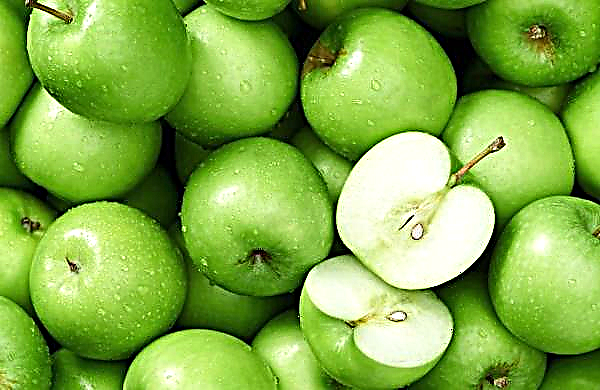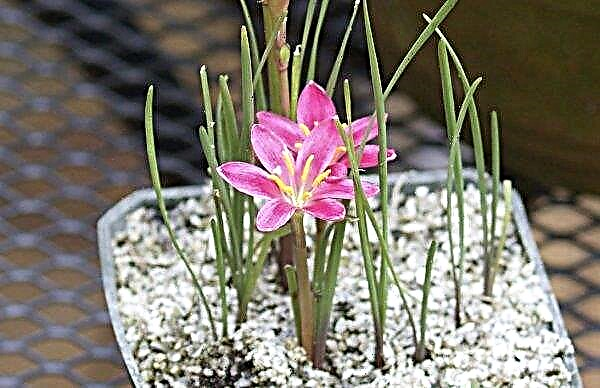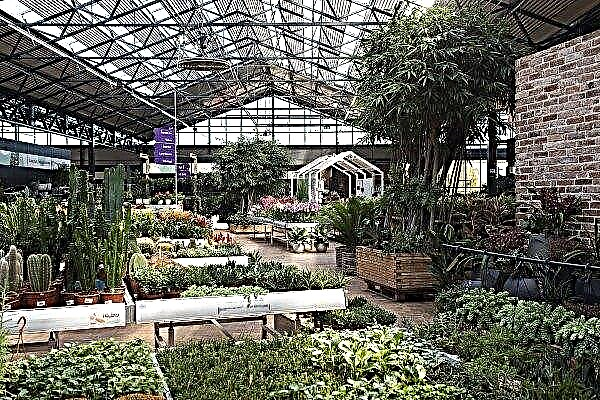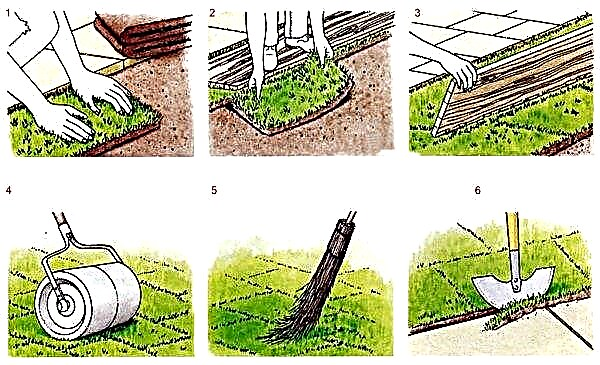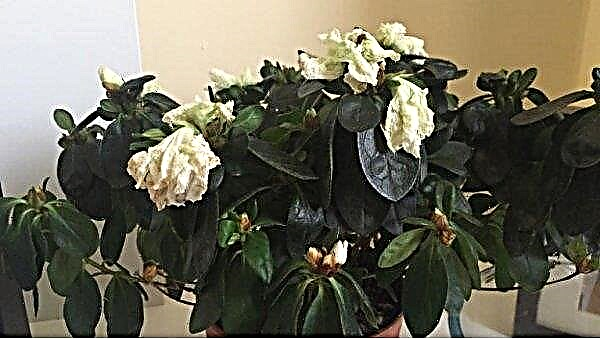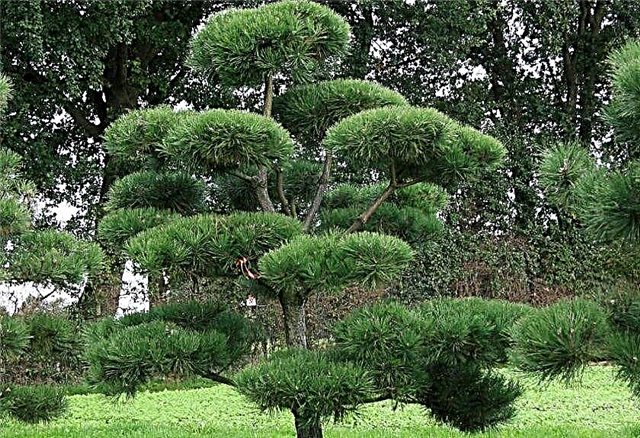Citrus fruits are the first outlandish crops cultivated by man in closed conditions. Due to its unpretentiousness and rapid ripening, citrus fruits to this day retain leadership among lovers of home gardening. To get an adult bright, lush tree and achieve fruiting, check out our material.
Indoor citrus plants and their description
Consider the best representatives of homemade citrus.
Did you know? Lemon is often found in Spanish folklore. There, its fruits symbolize unhappy love. And the orange is responsible for the happy.
Mandarin
Mandarin is one of the most cold-resistant varieties. Among the potted species, it is worth highlighting: Kovano-vase, Unshiu the Ivolistic, Nobile and others. The tree usually does not extend above 1.5 m. It blooms in May with white fragrant inflorescences. The fruits themselves reach maturity in late October. With proper maintenance, up to hundreds of fruits are harvested from one plant.

Orange
Potted orange is a perennial tree of rather large sizes. Growth is strictly vertical. Adult plants reach a height of 1–2 m. The plant blooms in March-April, and begins to produce fruits at the age of 3-5 years (depending on the variety). The most popular varieties of indoor oranges are Gamlin, Korolek, Pavlovsky, Trovita.

Lemon
Lemon is the most popular representative of citrus fruits in our homes. A lot of fruit-bearing varieties were developed, among them - Novogruzinsky, Genoa, Eureka, New Zealand, Kiev large-fruited, Ponderosa, Lisbon, etc.  Their main advantages are unpretentiousness and high productivity (from 6 to 15 lemons annually). The minus of the culture is the difficulty of forming a compact dense tree.
Their main advantages are unpretentiousness and high productivity (from 6 to 15 lemons annually). The minus of the culture is the difficulty of forming a compact dense tree.
Hybrids
About 60 citrus hybrids are known. The list is extensive and still replenished:
House growing conditions
It is quite simple to grow the described culture indoors.
Location
All representatives of citrus fruits are very demanding of light, therefore it is necessary to place the pot on the windows facing south or east. In addition, the tree should be provided with good ventilation, so regularly ventilate the room.
Temperature mode
Both extremely low temperature indicators and too high ones delay the growth of the tree, so in the summer try to keep the temperature in the room within +18 ... + 26 ° С. In winter, coolness is required (+12 ... + 16 ° C).
Important! Never expose a citrus tree to freezing temperatures.
Air humidity
Optimum humidity is up to 70%. Providing such conditions in the room is quite difficult. The situation is saved by regular spraying of the bush with warm water.
Home Care
Despite the fact that culture is unpretentious, a number of rules for its content still have to adhere to.
Watering
The soil should be moistened periodically and abundantly. But in order to prevent root decay, allow the earth to dry out between treatments. And in the resting phase, irrigate the earthen lump no more than once every 7–8 days.

The most optimal irrigation method is to water from a watering can with a long spout. Take soft water, without chlorine, at a temperature not lower than room temperature or 3-4 degrees higher. You can soften hard water by boiling.
Top dressing
Feed the bush exclusively in the phase of active development, i.e. from mid-February to mid-September. Fertilize only after moistening the soil. Culture responds positively to foliar top dressing. Use microbiological agents (for example, “Renaissance”, “Baikal”, “Vostok-EM1”). The frequency of top dressing is indicated on the packaging of each product.
Important! It is impossible to fertilize a strongly crumbling bush. And after buying or transplanting, do not feed the plant for 1-2 months.
Pruning
Citrus pruning is needed, it should be carried out in the spring. The purpose of the procedure is the formation of a beautiful crown. It is most optimal to give the citrus shape a compact tree with a low stem (no more than 20 cm in height). And for uniform leafyness, turn the plant once a year.
Transfer
Young bushes (under the age of 3 years) require transplantation once a year. Professionals practice the method of transshipment into a pot slightly larger than the previous one. The material is suitable for any, but the best option is a ceramic pot.
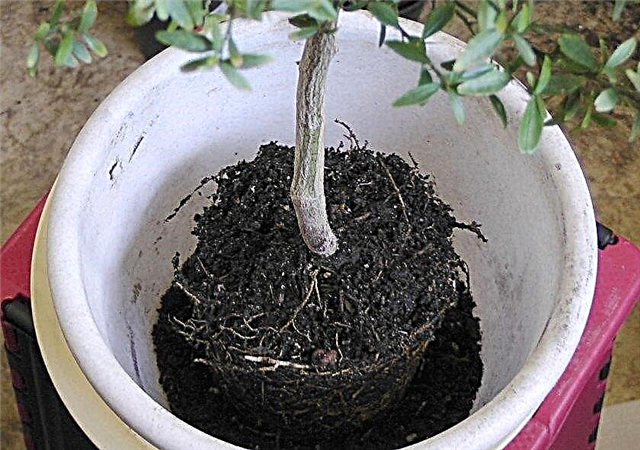
Adult specimens need a change of pot once every 3 years. If the container is too large and the tree is difficult to handle, only the top layer (5 cm) of soil is updated. Part of the old soil is replaced with a fresh fertile substrate. The transplant procedure is preferably carried out in late February or early March, but before blooming.
Take the substrate friable, with a neutral reaction (about 5-6 pH). The desired composition includes two parts of turf and leafy soil, with the addition of one part of humus and the same amount of sand.
It is not necessary to collect the soil yourself; you can purchase it in the store (ask for the soil mixture marked “for citrus fruits” or “for roses”). Procedures for transshipment of the bush and updating the topsoil are performed according to the standard scheme (for indoor plants).
Video: How to transplant a lemon
Breeding
There are two methods of propagating a citrus tree at home: cuttings or seeds.
Cuttings
To grow trees of the citrus family by cuttings, cut off the ripened young shoots from the mother plant that are at rest. The shoot should be from a healthy bush, it must be more than 6 months old, and its shape should be rounded.
Next, divide the cuttings into parts of 3-4 internodes. Make the top cut straight. Remove the bottom sheet, and under this eye, make an oblique cut, slightly scratch the bark with a clean needle. Dip the stalk in the root growth biostimulator “Kornevin”, then immerse it in the soil until the next leaf. The rooting process will take from 2 weeks to 1-2 months. Much depends on the level of air humidity.
Important! Never take an escape in the growth phase. The chances of its successful rooting are too small.
Seeds
To obtain a citrus tree from seeds, follow the proven technology:
- Pour a layer of drainage onto the bottom of the container.
- Fill the pot with a substrate including humus, coarse sand and fertile soil. Leave a couple of centimeters free to the top of the pot.
- From the ripe (or slightly overripe) fruit, remove the seeds.
- Without preliminary drying, immediately plant the seed in the soil to a depth of 2-3 cm.
- Organize a small greenhouse: cover the container with a bag of polyethylene and place it on the windowsill. Take off the bag every night, giving the soil access to air.
Water the soil every 3 days. In winter, light the pot for a month. Sprouts will appear after 2–4 weeks.

Growing problems
Such harmful insects as scabies and spider mites can bother a citrus plant:
- Shield - a harmful insect with an elongated miniature body covered with a protective wax shell. Pest larvae spread throughout the plant just a few hours after leaving the eggs. Located on the underside of the leaf plate, the parasite sucks the juices out of it. Visually, the colonies of this insect look like plaques on the tree. First of all, the brush should be cleaned with an old toothbrush. Then treat with oxychom, Tsineb, and Tiram insecticides. From folk remedies, wiping with a cloth soaked in diluted alcohol will help (repeat the procedure 3-4 times a week).
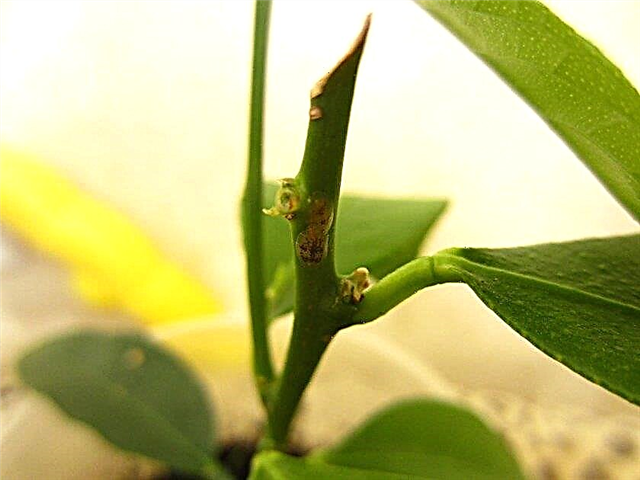
- If uneven small yellow dots appear on the leaves, and a powdery coating or small cobweb has formed on the back of the leaf, you are dealing with spider mite. To solve the problem, perform a single treatment of the bush with a special insecticide (for example, “Aktara” or “Aktellik”). If after one procedure it was not possible to completely get rid of the pest, repeated spraying is required.
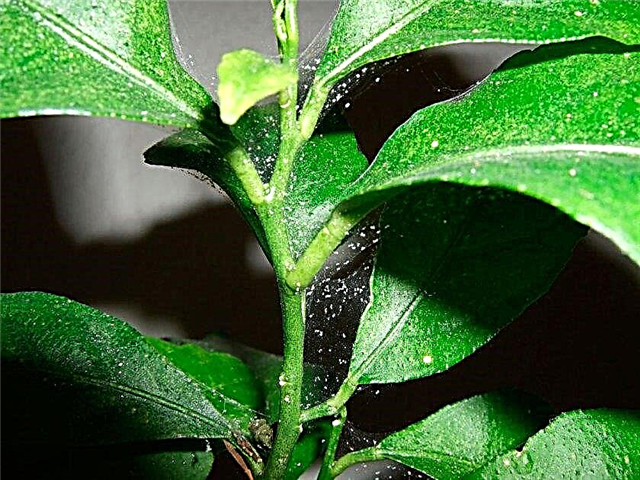
A tree can become ill in case of a gross violation of the rules of care.
Did you know? The Chinese believe that if you put 8 tangerines in a circle on a dish, then prosperity will be endless.
The most dangerous citrus diseases are gummosis, anthracnose, late blight rot:
- Gummosis - A disease characterized by the appearance of brown-red spots on the shoots. Over time, cracks form in these areas, from which a sticky yellowish liquid oozes. Effective methods of struggle are careful cleansing of wounds and their treatment with copper sulfate solution and garden var.
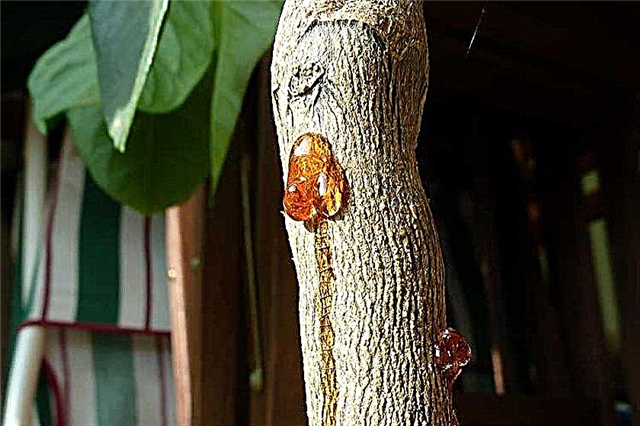
- Anthracnose - a formidable fungus that provokes the active dropping of flowers and foliage. On the fruits you can find reddish spots. The trimming of damaged branches and spraying the tree with chemical (Oksikh, Tsineb, Tiram) or biological (Agat, Alirin-B, Albit, Bactofit, Barrier, Planzir helps to defeat the disease "," Trichodermin ") fungicidal preparation.
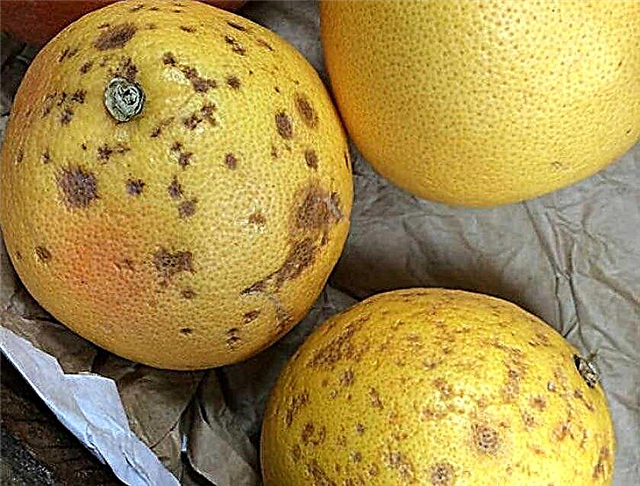
- Late blight - This is a fungus that manifests itself in the form of brown spots on the branching branch of the shoots. They treat late blight rot using the same fungicides as with anthracnose. In addition, it is advisable to replace the soil with a new one and reduce watering.
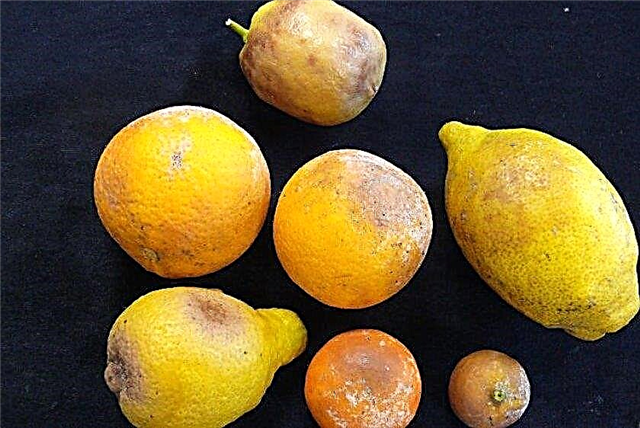
Citrus fruits are one of the most popular fruit plants cultivated at home by amateurs around the world. Having grown different types of citrus fruits, you can put together an amazing collection that will delight you with its bright elegant look and delicious aromatic fruits.










